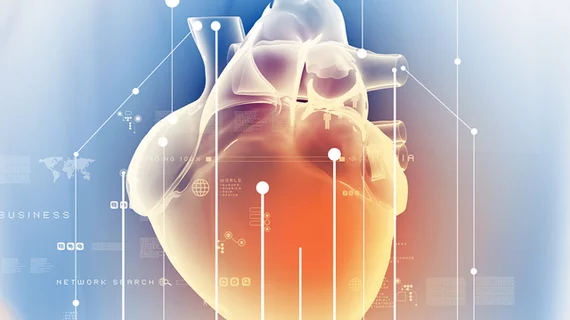Algorithm optimizes catheter ablation in AFib patients
Researchers at Florida Atlantic University’s College of Engineering and Computer Science have developed an algorithm that can identify precise internal targets for ablation in atrial fibrillation patients—the first, they say, that can do so without the help of specialized catheters or 3D electroanatomic mapping.
FAU’s Behnaz Ghoraani, PhD, and colleagues call their innovation iterative catheter navigation, or ICAN, and detail in the June edition of Cardiovascular Engineering and Technology how the tech works and can benefit AFib patients. They initiated the project as a response to inefficiencies in the ablation process, including low long-term success rates and laborious pre-procedure planning.
“Current non-pulmonary vein (PV) source detection techniques use single-electrode electrogram characteristics and construct a 3D electroanatomic AFib map of the entire atria and use it to identify non-PV ablation targets,” Ghoraani and colleagues wrote in the journal. “However, the contradictory clinical outcomes from these techniques suggest that there is a need for a new technique that can effectively utilize the information recorded during multipolar diagnostic catheter movements and successfully detect AFib ablation targets.”
That’s where ICAN comes in, an AFib source locator that leverages variations in electrogram characteristics rather than using single-electrode data. Instead of mapping a patient’s whole atria prior to locating the source of AFib, ICAN iteratively navigates a 20-electrode circular catheter toward problem areas without having to electrophysiologically map an entire atrial surface. It also doesn’t make any assumptions about the AFib source type, making it useful for locating both rotor and focal sources.
Ghoraani and her team claim ICAN can find and identify an AFib source with a success rate of 95.3%, stopping once the catheter reaches the target in question. They tested the algorithm on realistic simulated data that included several test cases of rotor and foci-driven arrhythmias and covered a range of activation patterns in 2D and 3D AFib simulations.
Placing ICAN on 114,921 initial catheter locations across a simulated regions for different rotor and foci mechanisms, the researchers were able to model globally distributed fibrosis in all cases. In human simulations ICAN also achieved a 99% detection rate in the presence of fibrosis and patchy myocardial scars—both elements that make AFib source detection more difficult—regardless of scar size.
“Our analysis showed that our algorithm is capable of identifying not only stable and unstable rotors but also focal sources as well as figure-of-eight reentry,” Ghoraani et al. said. “The high performance of the algorithm was evident by high source detection success rate. Also, the false detected sources with ICAN were not too far from the source and formed a dense cloud of points in the vicinity of the source.”
The innovation isn’t without its faults, though, the authors said. Robust and high-resolution results mean there has to be some sort of iterative process, and on average it takes ICAN between 7 and 12 catheter placements to localize its source. Still, it eliminates lengthy busywork that takes away from doctors’ already limited time.
“This algorithm could enable current clinical electrophysiology laboratory systems to detect non-PV AFib sources without the need for time-consuming mapping of the entire atria in advance or any assumption on the sustaining mechanism of AFib,” Ghoraani and colleagues wrote. “Such a system may significantly improve the success of patient-specific AFib ablation and facilitate treating patients before progression of AFib to the permanent stage.”

